Sky Q and How it Affects IRS Design As a TV system designer, I was intrigued by the initial reports in November 2015 that Sky was introducing a new product with potentially different signal requirements. Sky’s November launch marketing was mainly about a house with bright-coloured paint splashing around between TV sets. However, behind the colourful image of fluid viewing, this was clearly a significant new product. What new signals would be required for Sky Q? How would this affect our designs for an IRS? How can we upgrade existing systems? The systems that Able designs and builds provide signals for TV, Radio, Freesat and often one or more international satellites such as Hotbird. However it is Sky, which is the important driver for the design. Every IRS we have ever built provides Astra/Sky signals and when designing an IRS the main question is how many separate Sky feeds will be required. As every Sky+HD box requires two feeds, to allow for all situations, that means providing two feeds to any room where the resident may use a Sky+HD box. And that usually means a lot of equipment and coax cable. Since the launch, the information about how Sky plan for Sky Q to obtain its signals has gradually become clear and it will have a big impact on how new IRS’s will be designed. However, before we address these questions, let us first understand what Sky Q provides. Sky Q is Sky’s new premium satellite system. It consists of an entire family of new products and provides a more integrated service in the home. The idea is that there is just one main Sky STB (set-top box), which would typically sit in the Living room and be connected to the main TV. This acts as the Sky Q hub and is where programs are recorded. But then additional TV’s and portable devices can be networked to the main Sky Q STB, allowing watching of live TV or recorded programs. So Sky Q effectively replaces Sky multi-room/multi- screen and gives the advantage that all of the recorded programs are centralized. Sky Q is effectively a multi-screen/multi-user version of Sky+. Sky Q does not replace Sky+HD, which continues to be Sky’s standard offering. Key Features: As already mentioned, the Sky+ STB has two inputs. Each input expects a standard satellite switching signal. So the maximum number of channels that the Sky+ STB can concurrently tune into is two. The main Sky Q STB works very differently from a Sky+ box. Superficially it is the same, with two coax inputs. However, both of these inputs require a wideband signal 0.3GHz – 2.3GHz, each carrying the information of an entire polarisation. Together they cover the entire satellite band. Therefore, no switching is required and the Sky Q STB can concurrently tune into as many channels as it has tuners. In fact, the Sky Q Silver has twelve tuners! Most people using Sky with their own Sky dish will already have two cables running from a Quad LNB in the dish to the Sky+HD STB. When they upgrade to Sky Q, the Sky engineer will simply swap the Quad LNB for a new Sky Q fullband LNB delivering the full satellite spectrum on two cables (one delivering horizontal polarisation and the other vertical polarisation). Job done… …well, in most cases. There are possible hiccups as listed in the table below which hopefully the Sky engineer will be able to solve (Sky appear committed to making the transition to Sky Q as painless as possible, so they have instructed their engineers to be as flexible and helpful as possible when installing the system). The Sky Q wideband LNB will not operate through any existing IRS. The wideband signal frequencies, which straddle both the Terrestrial TV and Satellite frequency ranges, would not work on any existing (or planned) equipment. To cover the MDU (multi-dwelling unit) situation, Sky has provided an alternative way of providing signals to the Sky Q main box, dSCR (digital Single Cable Reception). dSCR is a variation on the established SCR technology. SCR is where multiple satellite receivers can share the same cable. Each satellite receiver specifies which channel (or channels) it would like to receive (conveyed to the SCR multi-switch via the coax cable) which are then transmitted over the single cable at separate pre-designated frequencies. Sky dSCR can deliver 16 channels, more than sufficient for the 12 tuners contained in the Sky Q Silver STB. Together with the TV equipment manufacturers, Sky has developed a family of dSCR multi-switches. These accept the standard 5-wire backbone signals (satellite Quattro + terrestrial) and provide from 4 to 16 (depending on the size of the multi-switch) dSCR outputs. The dSCR outputs are completely general purpose and depending on what equipment is connected, each output will generate standard Sky, Legacy SCR Sky or Sky Q signals. Plus Terrestrial. So how does this affect the design of a new IRS? Massively. Since Sky Q handles the internal communications via a data network, we now only really require: Why? Consider the scenarios: So we have reduced an IRS providing two feeds per habitable room to just one feed to the Living room. Sky may argue that a second Sky Q feed should be considered, to allow the resident to subscribe to a second Sky Q system to support a second 4K screen or even more Sky Mini’s. However, this would only apply in very large or up market dwelling. Where this doesn’t work, is where we want to provide other international satellite signals. The dSCR multi-switch is 5-wire only. In these situations, we require a separate IRS backbone carrying the additional satellites and separate feeds to as many rooms that require international signals. Here are some typical designs for the new environment. 1-Bed System (Terrestrial & Astra) 3-Bed System (Terrestrial & Astra) Existing systems will not directly support Sky Q. However, it is possible to make changes to solve this problem. Traditional Coax Systems Fibre Systems How Do I Find Out? Sky Q is a major new product which is Sky is heavily marketing and is likely to have a significant uptake amongst Sky users. Its impact on the design of an IRS is very significant, changing the rules for both the backbone and dwelling cabling. It may take consultants and designers some time to assimilate the impact.What is Sky Q?
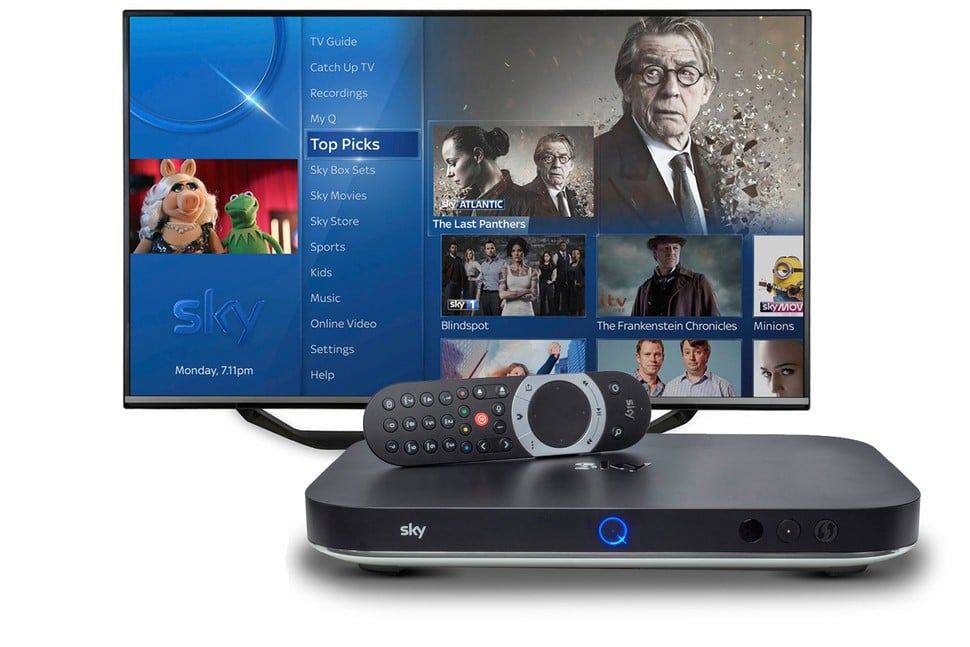
Summary of Sky Q STB Features
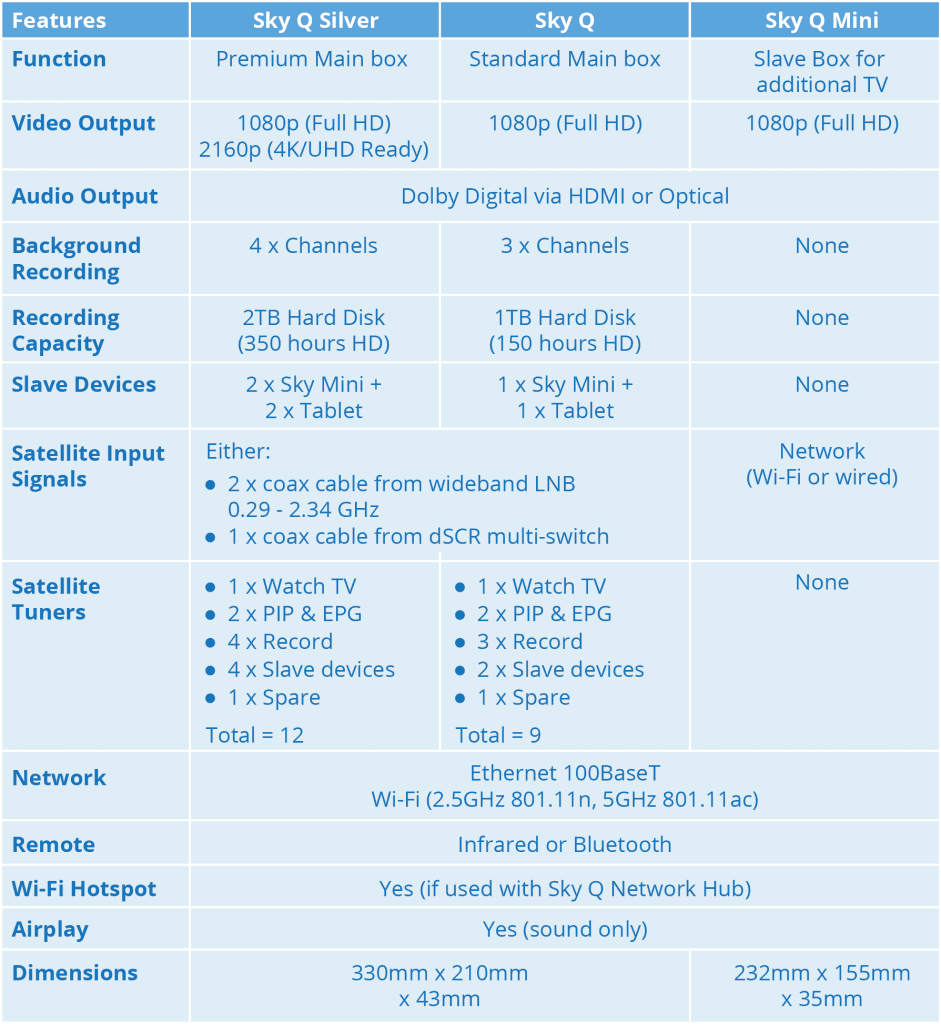
What Satellite Signals does the Sky Q Require?
How does Sky Q affect people with their own satellite dish?
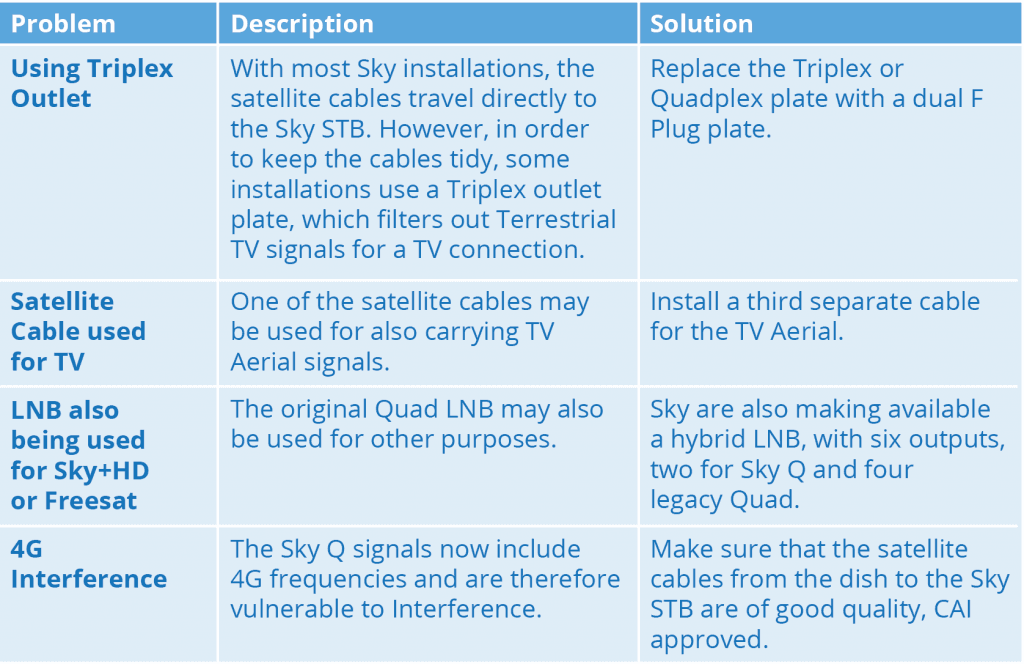
How does Sky Q affect the Design of a new IRS?
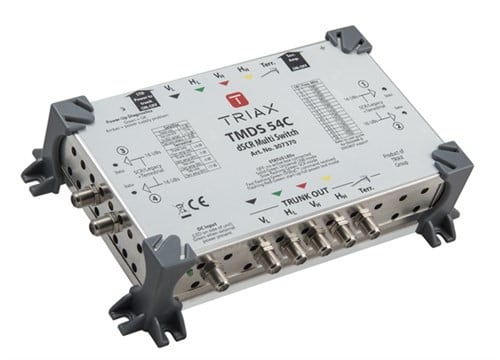
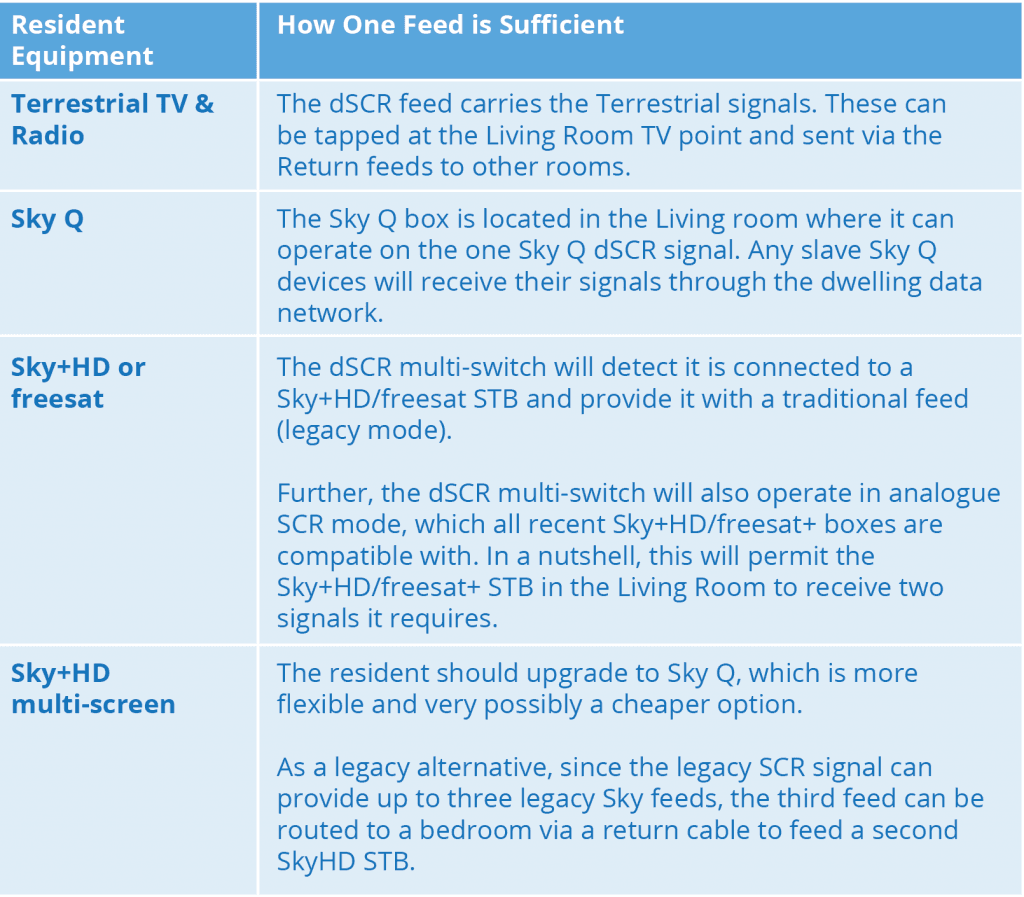
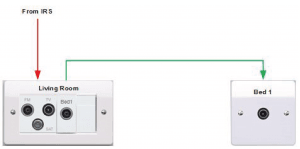
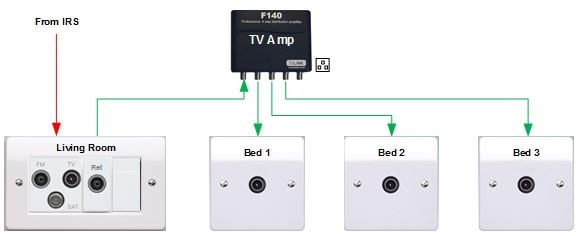

How do users of an existing IRS obtain Sky Q?
The solution for traditional coax based systems will be to install new dSCR multi-switches in the riser, tapping off the existing Astra/Terrestrial backbone signals. Sufficient dSCR ports should be installed to cover all Sky users. Once a development has been ‘enhanced’ in this way, if a resident wishes to subscribe to Sky Q, the Sky engineer will simply reconnect one of their coax feeds to a pre-installed dSCR multi-switch.
Sky are keen to encourage the enhancement and for apartment blocks with sufficient Sky Q upgrade prospects, Sky will subsidise some or all of the enhancement costs.
Some newer systems use fibre to the dwelling (FTTH). In this case, an adapter or multi-switch will need to be installed in the apartment wishing for Sky Q. This can happen either before or when the Sky Q is installed.
If you live in a dwelling fed by a communal Sky distribution system, speak to your managing agent about any measures they may have taken to provide for Sky Q. Alternatively, feel free to call Able to discuss options. We can normally advise and if applicable we can organise a subsidised Sky Q enhancement to your block.Conclusion
For information and advice, please contact to Able.

